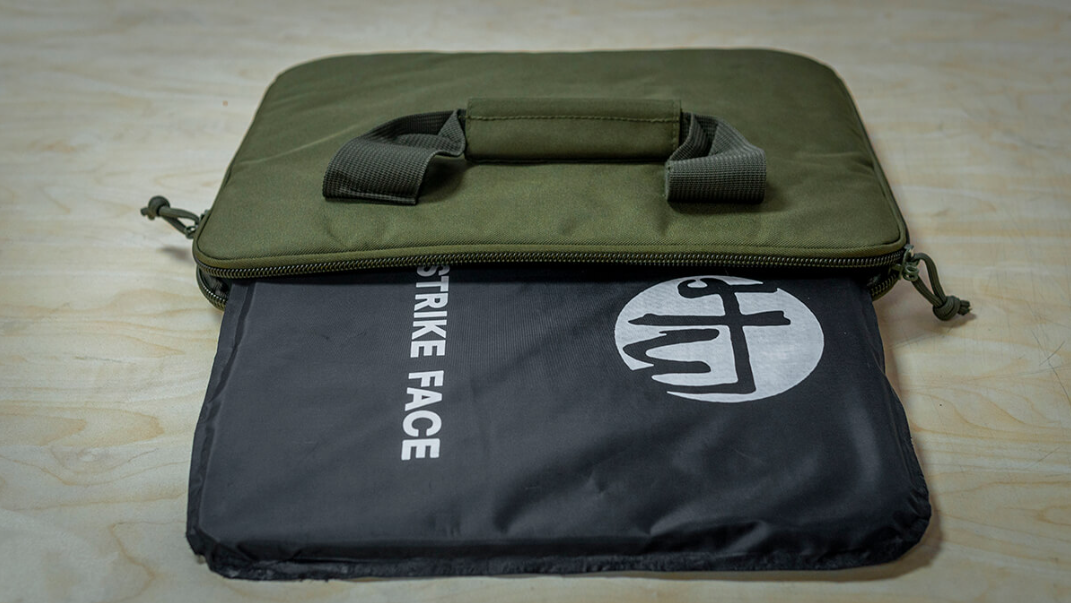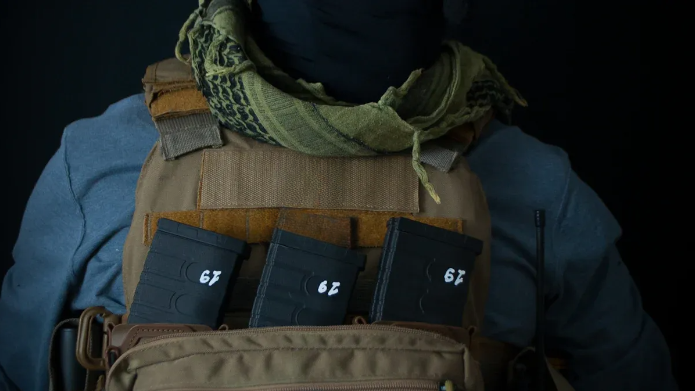Lightweight bulletproof materials are at the heart of modern body armor, offering protection without sacrificing comfort or mobility. From kevlar and UHMWPE to cutting-edge nanomaterials like carbon nanotubes and graphene, each material brings unique strengths and trade-offs. This guide highlights the key properties, advantages, and practical applications of these materials, providing a clear overview of how today’s lightweight armor ensures safety and mobility.

Types of Lightweight Bulletproof Materials
Kevlar and Aramid Fibers
Kevlar is a popular ballistic material used in body armor and bulletproof vests. It has a high strength-to-weight ratio and resists impacts from bullets. Kevlar layers absorb energy and help stop projectiles in lightweight bulletproof material designs.
Strengths:
- Kevlar provides strong bulletproof protection.
- It is flexible and allows for comfortable vests.
- Kevlar is lightweight and easy to wear.
Weaknesses:
- Kevlar can degrade with moisture and sunlight.
- It may not stop high-velocity rounds without extra layers.
Kevlar is common in bulletproof vest and lightweight ballistic vest construction. Many body armor products use aramid fibers for added bullet resistance.
UHMW Polyethylene
UHMWPE, including dyneema and spectra, is another leading ballistic material. It is lighter than kevlar and offers excellent bulletproof protection. Dyneema layers provide flexibility and comfort in body armor and vests.
Strengths:
- Dyneema is extremely lightweight.
- It resists moisture and chemicals.
- UHMWPE offers high ballistic performance.
Weaknesses:
- Dyneema can lose strength at high temperatures.
- It may need more layers for the same protection as kevlar.
Body armor and bulletproof vests often use UHMWPE for improved mobility. Dyneema is popular in lightweight bulletproof material designs.
Carbon Nanotubes and Nanofibers
Carbon nanotubes are advanced ballistic materials with unique properties. They offer strong protection in thin layers and add flexibility to body armor. Nanofibers can increase the strength of bulletproof vests.
Strengths:
- Carbon nanotubes are very strong and light.
- They allow for thin, flexible armor.
- Nanofibers improve ballistic resistance.
Weaknesses:
- Carbon nanotube armor is expensive.
- Production methods are still developing.
Body armor with carbon nanotubes can be lighter and more comfortable. Bulletproof vests with nanofibers may offer better mobility.
Graphene
Graphene is a new ballistic material with high strength. It can stop bullets in thin layers and adds flexibility to body armor. Graphene is still being tested for use in bulletproof vests.
Strengths:
- Graphene is extremely strong and light.
- It allows for thin, flexible vests.
- Graphene may improve ballistic protection.
Weaknesses:
- Graphene is costly and hard to produce.
- It is not widely used in armor yet.
Graphene could change the future of lightweight bulletproof material. Body armor and bulletproof vests may use graphene for better protection and comfort.
| Material | Strengths | Weaknesses | Typical Uses |
|---|---|---|---|
| Kevlar | High strength, flexible | Degrades with moisture | Bulletproof vest, body armor |
| UHMWPE/Dyneema | Lightweight, resists water | Loses strength in heat | Body armor, vests |
| Carbon Nanotubes | Strong, thin, flexible | Expensive, new technology | Advanced armor, vests |
| Graphene | Extremely strong, thin | Costly, limited use | Future body armor, vests |
Traditional vs Lightweight armor material
Weight and Comfort
Weight plays a major role in how comfortable armor feels during daily use. Traditional armor often uses heavy materials like steel or ceramic, which can cause fatigue. Lightweight and flexible options, such as kevlar and dyneema, make bulletproof vests easier to wear for long periods.
Lightweight body armor reduces strain on the wearer. Vests made from modern ballistic material allow for better movement and less discomfort. Many users prefer flexible and lightweight vests for daily activities.
Flexibility and Mobility
Flexibility affects how well a person can move while wearing armor. Traditional armor restricts movement due to its rigid structure. Lightweight and flexible materials, such as kevlar and UHMWPE, improve mobility in bulletproof vests.
Body armor with advanced ballistic material bends with the body. This flexibility helps users perform tasks without feeling limited. Vests with carbon nanotubes or nanofibers offer even greater mobility.
Level of Protection
The level of protection measures how well armor stops bullets and other threats. Traditional armor provides high ballistic protection but adds weight. Lightweight body armor uses layers of advanced ballistic material to achieve similar or better protection.
Kevlar and dyneema vests can stop many types of bullets. Some vests use multiple layers to increase the level of protection. Ballistic body armor with graphene or carbon nanotubes may offer even higher ballistic performance.
Concealability and Daily Use
Concealability matters for those who need to wear armor under clothing. Traditional armor is bulky and hard to hide. Lightweight and flexible vests fit closer to the body and remain less visible.
Body armor made from thin ballistic material allows for daily use. Many bulletproof vests designed for concealment use kevlar or UHMWPE. These vests help users stay protected without drawing attention.
Durability and Maintenance
Durability ensures armor lasts through repeated use. Traditional armor resists impacts but may crack or become damaged. Lightweight body armor, such as kevlar or dyneema, resists wear but can degrade from moisture or sunlight.
Proper care extends the life of bulletproof vests. Users should check for damage to layers and replace vests as needed. Protective armor made from advanced materials often requires less maintenance.
Applications in Body Armor

Armor Plate
Armor plates use lightweight materials to stop high-speed bullets. Many plates use layers of UHMWPE or ceramic combined with aramid fibers. These plates fit inside tactical body armor to give extra protection without adding too much weight. Some plates use carbon nanotubes to make the armor even lighter and stronger. Users choose these plates for situations where they need strong bulletproof protection and easy movement.
Bulletproof Vest
A bulletproof vest uses several layers of advanced materials. Kevlar and UHMWPE are common choices for these vests. The design keeps the vest light and flexible, so users can wear it for long hours. Bulletproof vests protect the chest and back from handgun and rifle threats. Many people wear these vests under clothing for daily use. Some vests use nanofibers or graphene to improve comfort and flexibility.
Bulletproof Helmet
Bulletproof helmets protect the head from bullets and shrapnel. Manufacturers use lightweight materials like aramid fibers and UHMWPE to keep the helmet comfortable. These helmets fit well and do not cause neck strain. Some helmets use new materials like carbon nanotubes for extra strength. Police and military teams use these helmets as part of their body armor.
Bulletproof clothing
Bulletproof clothing includes jackets, shirts, and even pants. Designers use thin layers of UHMWPE or kevlar to keep the clothing light and easy to wear. This clothing looks like regular clothes but gives extra protection. People who need discreet protective armor often choose bulletproof clothing. The right material helps balance comfort, flexibility, and safety.
Innovations and Future Trends
Novel Nanomaterial Breakthroughs
Researchers continue to develop advanced ballistic materials that improve both strength and weight. Nanomaterials like carbon nanotubes and graphene show great promise for future ballistic protection. These materials can create armor that is lighter and thinner while still offering high levels of safety.
Graphene stands out for its impressive ballistic performance in laboratory tests. Carbon nanotubes add flexibility and strength to new armor designs. Scientists believe these nanomaterials will lead to better protection and more comfortable body armor.
| Material | Weight | Flexibility | Protection Level | Durability | Concealability |
|---|---|---|---|---|---|
| Kevlar | Light | High | Medium | Medium | High |
| UHMWPE | Very Light | High | Medium-High | High | High |
| Carbon Nanotubes | Lightest | Very High | High | High | Very High |
| Graphene | Lightest | Very High | Highest | Medium | Very High |
Future of Smart Protective Gear
The next generation of body armor may include smart features. Some new designs use sensors to monitor impacts and alert the wearer. Others may adjust their shape or stiffness for better comfort and safety.
Engineers work to combine lightweight ballistic materials with smart technology. This approach could help users stay safe and comfortable in many situations. The future of protective gear looks bright as new materials and smart systems come together.
Conclusion
Lightweight bulletproof material combines strength, flexibility, and low weight. These properties help body armor provide reliable protection while staying comfortable for daily use. Users should compare armor options by looking at protection level, comfort, and how well the armor fits their needs. Understanding these features allows people to choose body armor that offers both safety and ease of movement. Smart choices in armor lead to better protection and improved daily performance.
